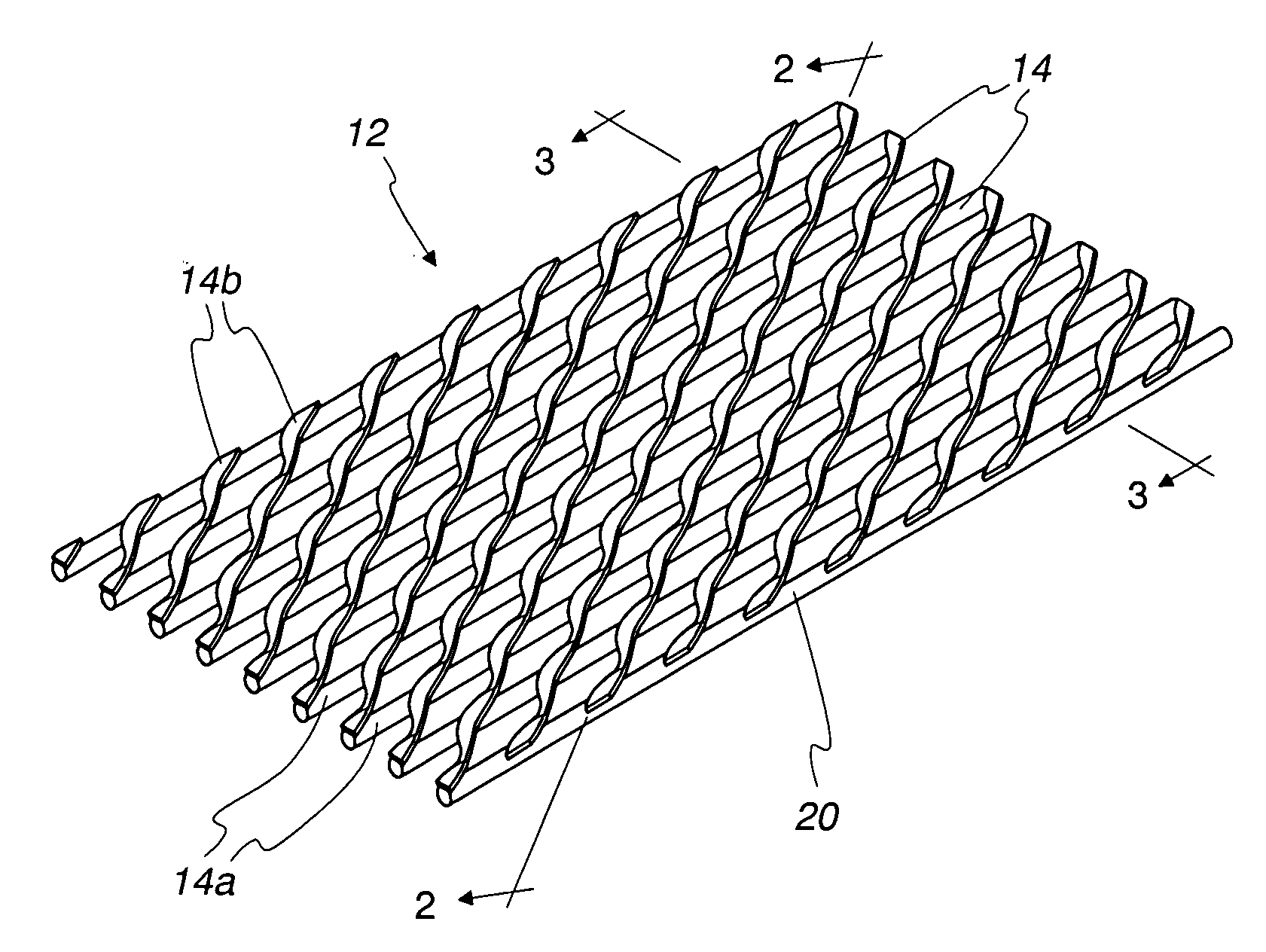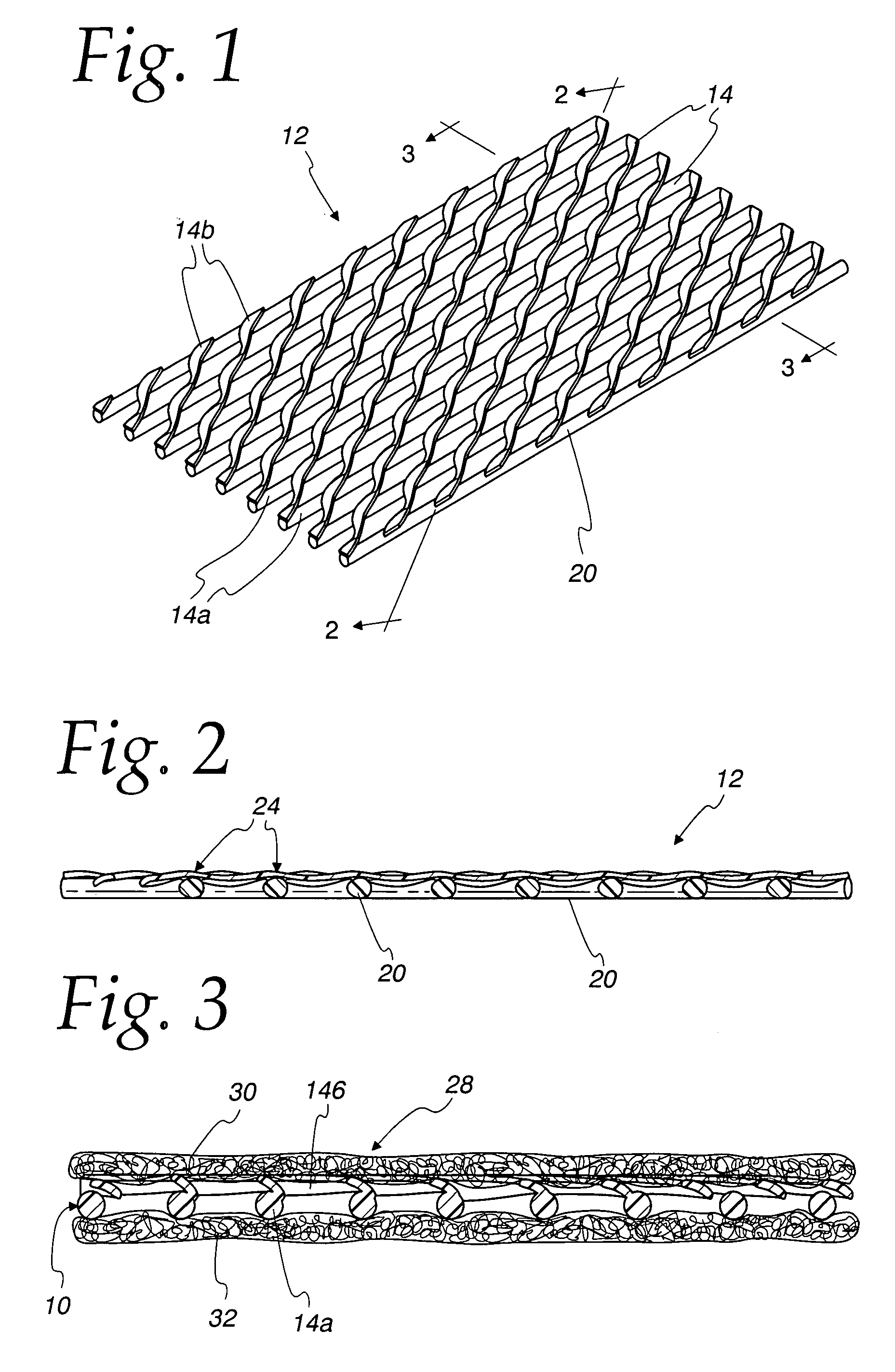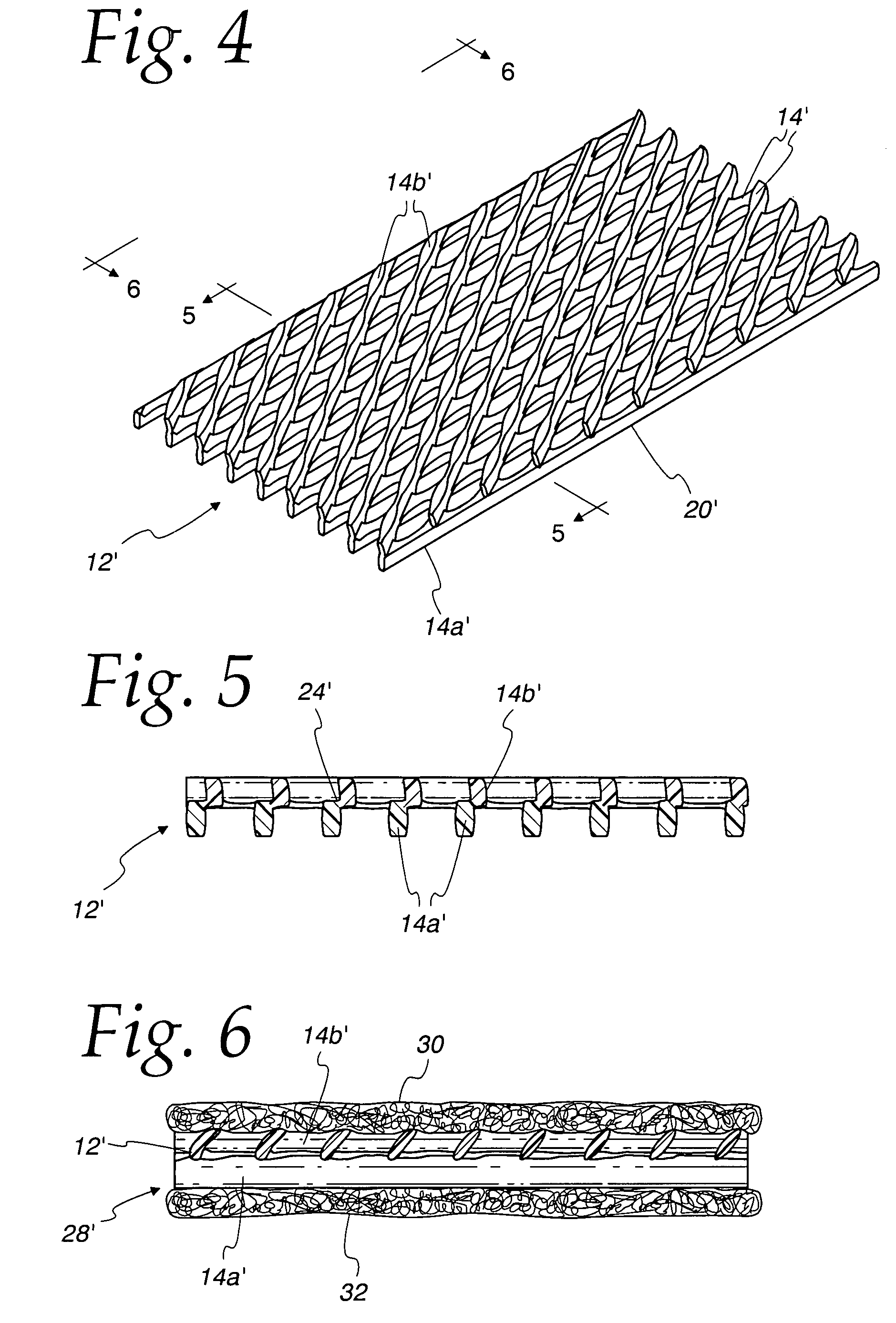Geonet for a geocomposite
a geocomposite and geotextile technology, applied in the field of geocomposites, can solve the problems of reducing the flow rate through the geotextile, requiring large amounts of valuable land, and unavoidably required in today's societal structures, and achieve the effect of facilitating the draining of liquid
- Summary
- Abstract
- Description
- Claims
- Application Information
AI Technical Summary
Benefits of technology
Problems solved by technology
Method used
Image
Examples
Embodiment Construction
[0040]One embodiment of a geonet 12 according to the present invention is shown in FIGS. 1-2. The geonet 12 consists of substantially incompressible longitudinal strands 14 (e.g., formed of polyethylene [PE], including but not limited to high density polyethylene [HDPE]), including a lower set of a plurality of substantially parallel strands 14a and an upper set of a plurality of substantially parallel strands 14b. Advantageously, one set of strands 14a extends parallel to the longitudinal direction of the geonet 12, and the other set of strands 14b is at an angle of 45° to 70° relative to the longitudinal strands 14a so that a crisscrossed grid 20 is formed (see FIG. 1).
[0041]It should be understood that as used herein, “substantially incompressible” is meant to refer to materials such as HDPE which, though susceptible to bending, breaking, fracture and / or creep, does not appreciably compress in the vertical direction when vertical forces are applied.
[0042]At their overlapping inte...
PUM
| Property | Measurement | Unit |
|---|---|---|
| angle | aaaaa | aaaaa |
| angle | aaaaa | aaaaa |
| thick | aaaaa | aaaaa |
Abstract
Description
Claims
Application Information
 Login to View More
Login to View More - R&D
- Intellectual Property
- Life Sciences
- Materials
- Tech Scout
- Unparalleled Data Quality
- Higher Quality Content
- 60% Fewer Hallucinations
Browse by: Latest US Patents, China's latest patents, Technical Efficacy Thesaurus, Application Domain, Technology Topic, Popular Technical Reports.
© 2025 PatSnap. All rights reserved.Legal|Privacy policy|Modern Slavery Act Transparency Statement|Sitemap|About US| Contact US: help@patsnap.com



